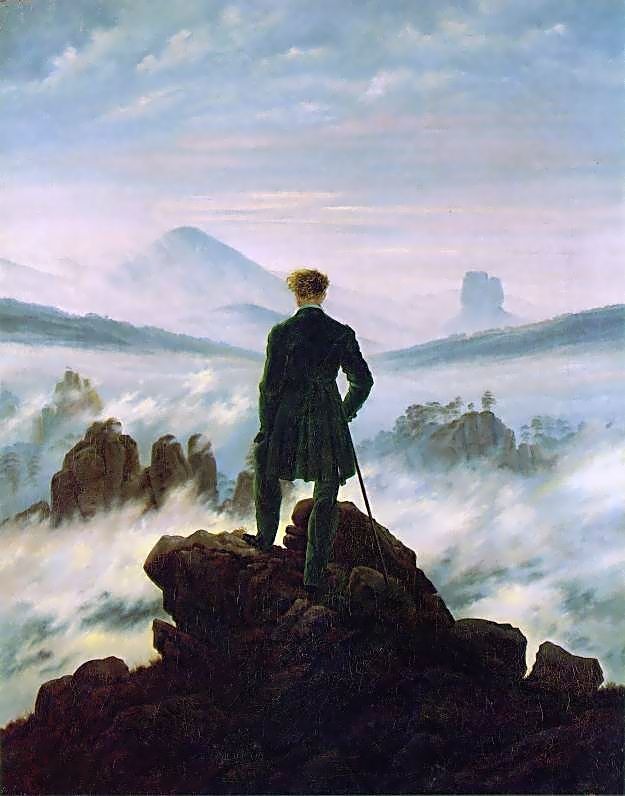In the penultimate section of Jeffrey Pethybridge’s book of poetry entitled Striven, The Bright Treatise, Pethybridge takes an unexpected, yet perfectly executed, departure by employing many characteristics of Romanticism. I feel that he does so to share the sensations of his brothers final flickers of what Pethybridge paints as a helplessly heavy emotional state.
I think the most intriguing example of this is Pethybridges steady-handed reference of the artistic technique of Rückenfigur. Rückenfigur is basically a person seen from behind contemplating a view. An example of this can be found in Caspar David Friedrich’s very famous Romantic Era work entitled Wanderer above the Sea of Fog. 
The painting shows a man with his back turned facing an extremely sublime and seemingly unearthly landscape. The landscape is basically a foggy sea with cliffs jutting from it. From the onlookers gaze, it appears that the man on the cliff has no where to progress safely in any direction. The idea that it is a foggy sea is also significant. It helps to really represent the pure both frightening and exciting uncertainty that plagues the human conscious with every unfolding moment. According to historian John Lewis Gaddis, the man’a back being turned extremely crucial to the meaning of the work. You cannot tell whether his expression is one of terror or excitement or both at the same time. Also, the man appears to be able to represent a person in any stage of their life. His hair it painted fiery red put with some patched of white that could be fog or aging. I also, personally, found the cane significant. It’s there to help the man along but it would fail him if he were to go over the edge. Overall, this one reference, puts Pethybridges brother’s state into perspective.
Like the man in Friedrich’s painting, Pethybridge’s brother’s real emotions are masked. One couldn’t tell if he was terrified, uncertain, or excited or all three. He was heavy with sadness and confusion. Like every human, he was completely blind to what was ahead of him. For some it is exhilarating and makes life more worth living. For him, it was apparently too much. He is described by Pethybridge as standing on the Golden Gate Bridge looking at a description of the western sky that can’t help but make even me feel uneasy, confused, excited, terrified, dwarfed, and insignificant at the same time. He was also looking out over a foggy unforgiving bay a four second’s plummet below him. Pethybridge calls this “lucid waves” (Pethybridge 61) which suggests, as well as dreams, nightmares. It brings to light a petrifying and nightmarish uncertainty of what is real from his likely feelings of complete enclosure from the rest of society. Eventually, everything “all gargantuan” (161) surrounded him too heavily and he jumped.
Romanticism was employed by Pethybridge to effectively describe his brothers feelings that led to his eventual suicide. It was also employed to maybe even suggest a heroic suicide. One that was caused by being overly regulated by society and not being able think or act freely. As if being able to decide when he leapt permanently from the quotidian.
